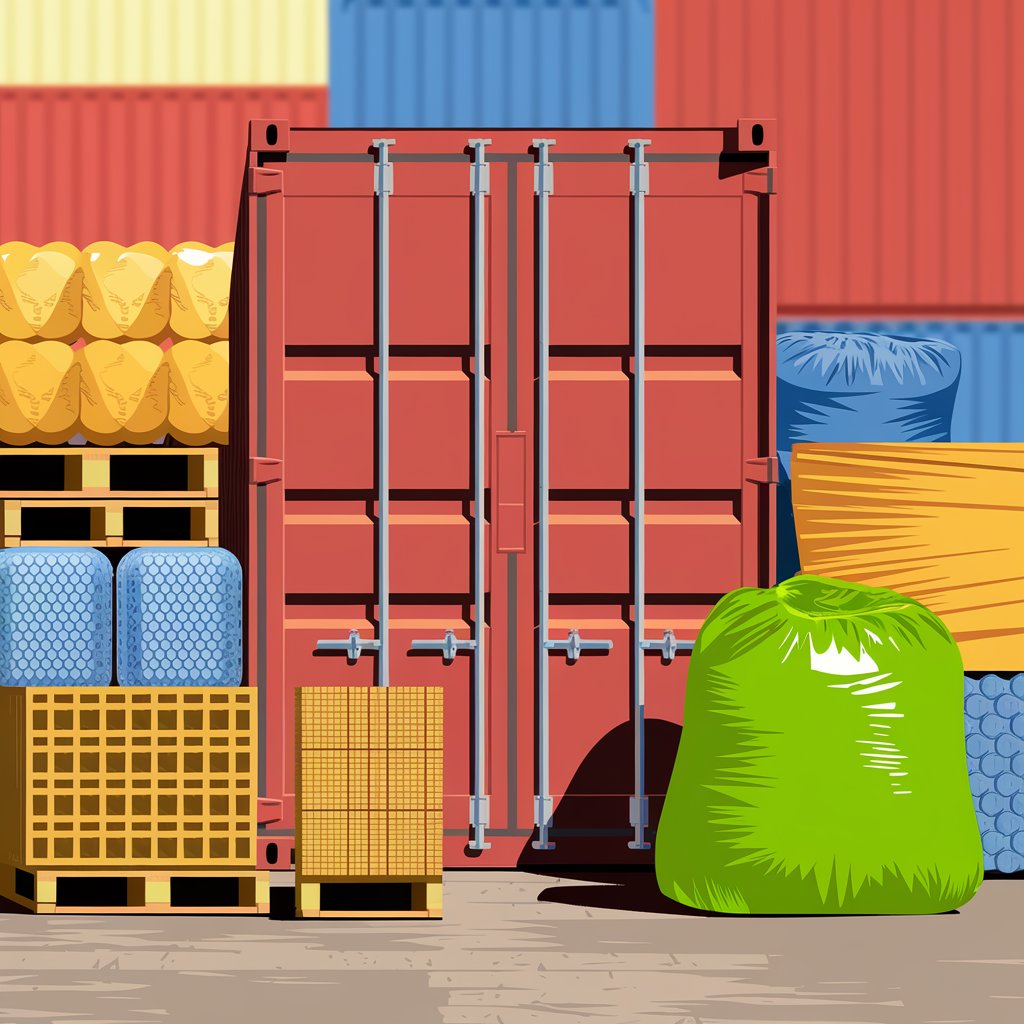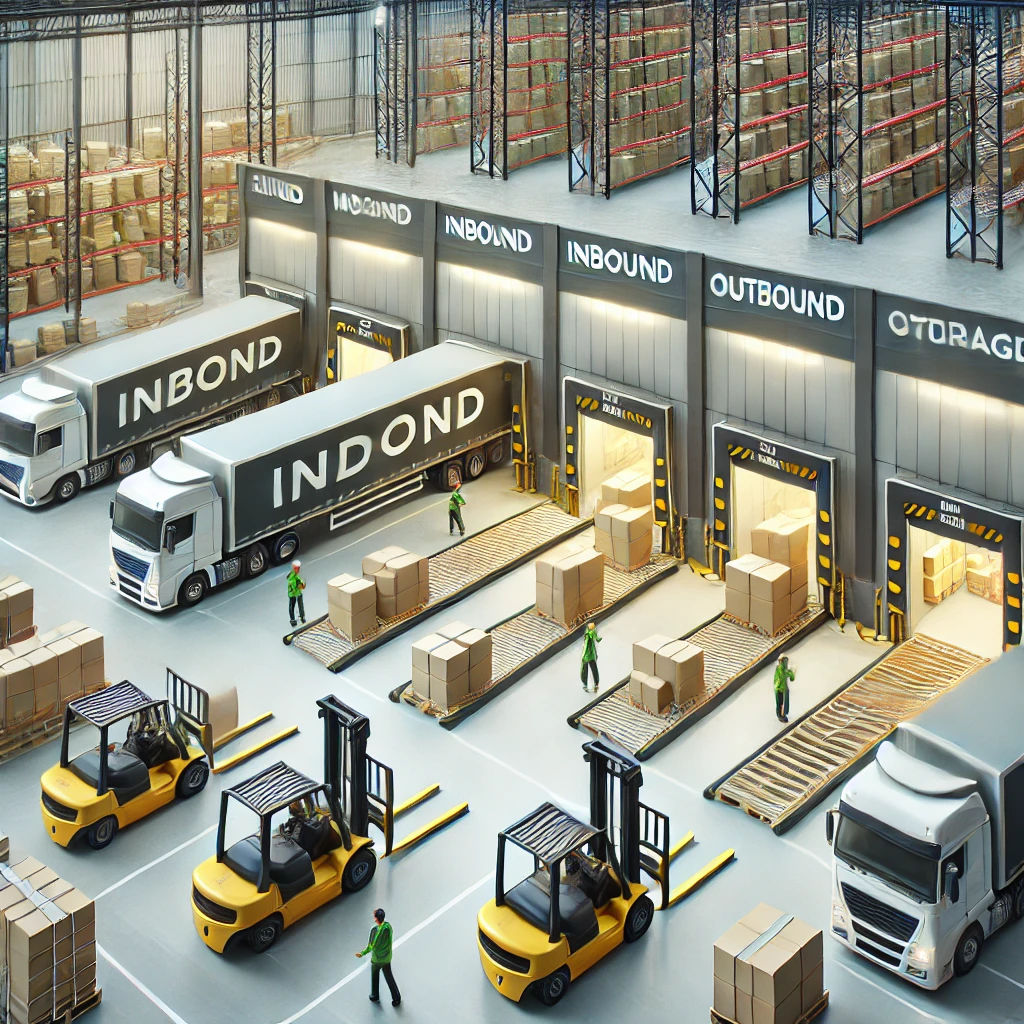Cross-Docking: Streamlining Your Distribution Process

What is Cross-Docking?
Cross-docking is a logistics practice where products from a supplier or manufacturing plant are distributed directly to a customer or retail chain with minimal to no handling or storage time. Incoming shipments are unloaded from inbound trucks and quickly sorted, consolidated, and directly loaded onto outbound trucks for delivery.
The term “cross-docking” comes from the practice of moving products from one loading to another, literally crossing the dock of the distribution center.
Key Features:
- Minimal storage time (usually less than 24 hours)
- Rapid sorting and consolidation of goods
- Direct transfer from inbound to outbound transportation
- Reduced handling and warehousing costs
The Benefits
Implementing a strategy can offer numerous advantages to businesses across various industries. Here’s why it matters:
- Reduced Storage Costs: By minimizing or eliminating the need for warehousing, companies can significantly reduce storage-related expenses.
- Faster Transit Times: Products move quickly from receiving to shipping, reducing overall transit times and improving customer satisfaction.
- Decreased Labor Costs: Less handling and storage mean fewer labor hours required for warehouse operations.
- Improved Inventory Management: Cross-docking reduces the need for long-term inventory storage, minimizing the risk of obsolescence and improving cash flow.
- Enhanced Product Quality: Less handling and shorter storage times can lead to reduced product damage and improved freshness for perishable goods.
- Increased Flexibility: Cross-docking allows for easier adaptation to changes in demand and quicker response to market fluctuations.
- Optimized Transportation: Consolidation of shipments can lead to fuller truckloads and more efficient use of transportation resources.

Types
Cross-docking can be implemented in various ways, depending on the specific needs of a business. Here are the main types:
1. Pre-Distribution
In this model, products are received, sorted, and consolidated based on pre-determined customer orders or retail store needs. This is common in retail distribution.
2. Post-Distribution
Here, products are received and then allocated to different outbound shipments based on real-time demand information. This is often used in just-in-time (JIT) manufacturing environments.
3. Opportunistic
This flexible approach allows for decisions to be made on whether to cross-dock or store products based on current orders and inventory levels.
4. Flow-Through
In this continuous process, products are constantly moving from receiving to shipping with minimal dwell time, often used for high-volume, standardized products.
Industries Benefiting
While cross-docking can be advantageous in many sectors, some industries find it particularly beneficial:
- Retail: Large retailers use to efficiently distribute products to numerous stores.
- Automotive: Just-in-time manufacturing relies heavily on cross-docking for timely component delivery.
- Food and Beverage: Perishable goods benefit from the reduced transit times offered by cross-docking.
- E-commerce: Helps meet the demand for rapid order fulfillment.
- Pharmaceuticals: Time-sensitive and temperature-controlled products can be quickly distributed using cross-docking.

Implementing Cross-Docking: Key Considerations
While the benefits of are clear, successful implementation requires careful planning and execution. Here are some key factors to consider:
1. Facility Design
Cross-docking facilities require specific layouts to facilitate the smooth flow of goods. Key design elements include:
- Sufficient dock doors for simultaneous loading and unloading
- Ample staging areas for sorting and consolidation
- Advanced material handling equipment for quick movement of goods
- Clear traffic patterns to prevent congestion
2. Technology Integration
Effective relies heavily on technology for coordination and efficiency:
- Warehouse Management Systems (WMS) for real-time inventory tracking
- Transportation Management Systems (TMS) for optimized routing and scheduling
- Barcode scanners and RFID technology for accurate product identification
- Advanced analytics for demand forecasting and resource allocation
3. Strong Supplier Relationships
Successful depends on reliable and consistent inbound shipments:
- Establish clear communication channels with suppliers
- Implement strict scheduling and delivery windows
- Ensure product labeling and packaging meet requirements
4. Skilled Workforce
Cross-docking operations require a well-trained team:
- Invest in training programs for efficient sorting and handling techniques
- Develop clear standard operating procedures (SOPs) for all activities
- Foster a culture of continuous improvement and adaptability
5. Performance Metrics
Monitor and optimize your operations with key performance indicators (KPIs):
- Dock-to-stock time
- Order fulfillment accuracy
- On-time shipping performance
- Labor productivity
- Transportation utilization

Challenges
While offers many benefits, it’s not without its challenges:
- Coordination Complexity: Synchronizing inbound and outbound shipments requires precise timing and communication.
- Technology Dependence: Reliance on advanced systems can lead to disruptions if technology fails.
- Limited Product Suitability: Not all products are ideal for, particularly those with unpredictable demand or special handling requirements.
- Quality Control: The rapid movement of goods can make thorough quality checks challenging.
- Initial Investment: Setting up an efficient cross-docking operation may require significant upfront costs in facility design and technology-
Best Practices for Successful
To maximize the benefits of cross-docking and overcome potential challenges, consider these best practices:
- Start Small and Scale: Begin with a pilot program focusing on high-volume, predictable products before expanding.
- Invest in Training: Ensure all staff are well-versed in cross-docking procedures and the importance of speed and accuracy.
- Leverage Data Analytics: Use predictive analytics to optimize scheduling and resource allocation.
- Implement Continuous Improvement: Regularly review and refine your cross-docking processes based on performance data and feedback.
- Maintain Flexibility: Be prepared to adapt your strategy as business needs and market conditions change.
- Focus on Collaboration: Foster strong partnerships with suppliers, carriers, and customers to ensure smooth operations.
- Prioritize Visibility: Implement systems that provide real-time visibility into inventory and shipment status throughout the process.
The Future

As technology continues to evolve and supply chains become increasingly complex, the future of cross-docking looks promising. Here are some trends to watch:
- Automation and Robotics: Advanced robotics systems for sorting and moving goods with minimal human intervention.
- Artificial Intelligence: AI-powered systems for optimizing cross-docking operations in real-time.
- Internet of Things (IoT): Enhanced tracking and monitoring capabilities through IoT sensors and devices.
- Blockchain Technology: Improved transparency and traceability across the entire supply chain.
- Sustainable Practices: Integration of eco-friendly technologies and processes in operations.
Conclusion: Embracing Cross-Docking for Competitive Advantage
Cross-docking represents a powerful strategy for logistics managers looking to streamline their distribution processes, reduce costs, and improve customer satisfaction. By minimizing storage time, optimizing transportation, and leveraging advanced technologies, cross-docking can transform your supply chain operations and give your business a competitive edge in today’s fast-paced market.
As you consider implementing or optimizing cross-docking in your organization, remember that success lies in careful planning, continuous improvement, and a willingness to adapt. Start by assessing your current operations, identifying suitable products for cross-docking, and gradually building the infrastructure and processes needed to support this efficient distribution model.
Whether you’re a retailer looking to speed up store replenishment, a manufacturer aiming to optimize your just-in-time production, or an e-commerce business striving for faster order fulfillment, cross-docking could be the key to unlocking new levels of efficiency and customer satisfaction in your supply chain.
Are you ready to take your distribution process to the next level with cross-docking? Begin by evaluating your current operations, setting clear goals, and exploring the technologies and partnerships that can support your cross-docking journey. With the right approach, you can turn the challenges of modern logistics into opportunities for growth and excellence.
